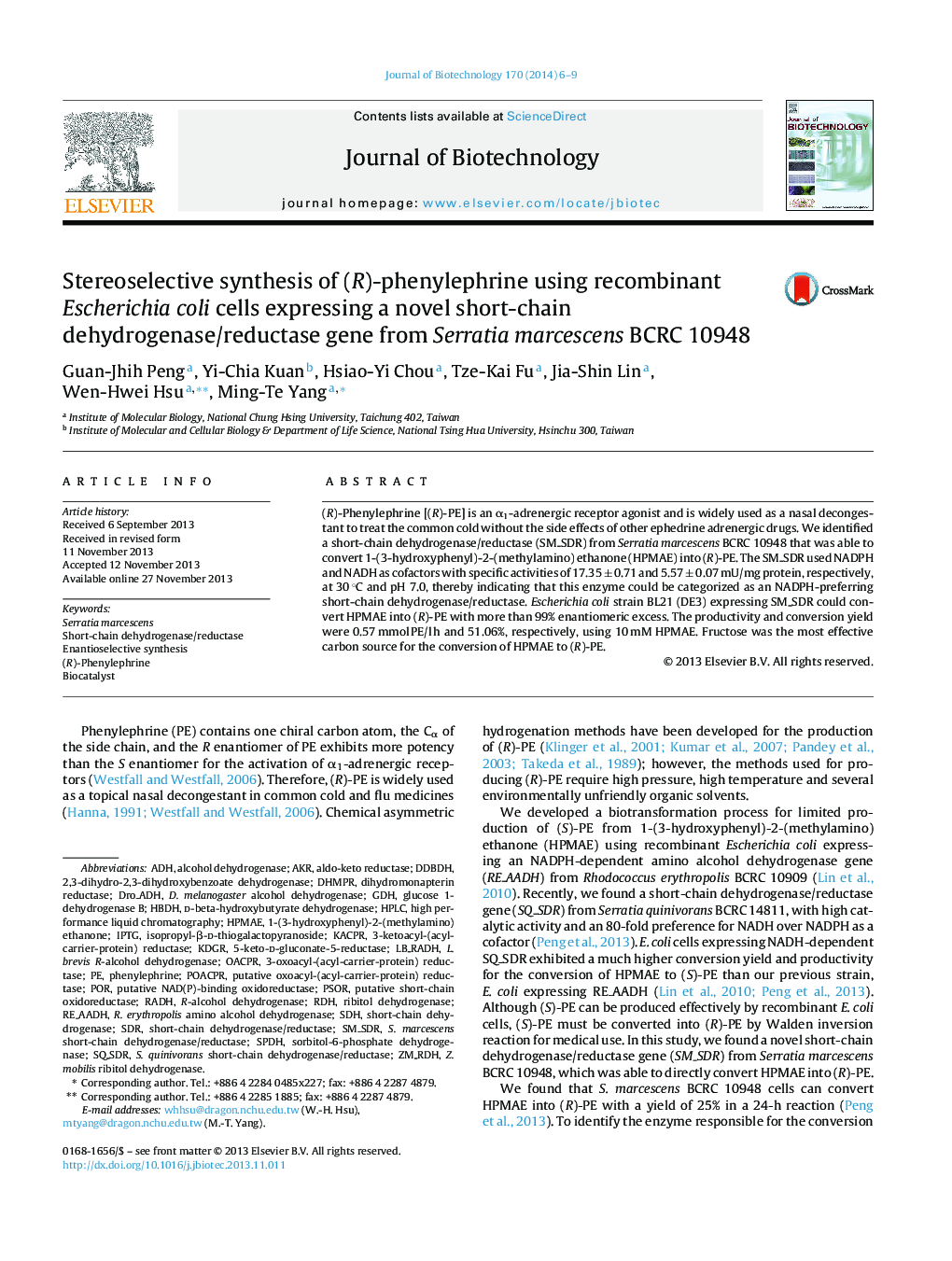| Article ID | Journal | Published Year | Pages | File Type |
|---|---|---|---|---|
| 23264 | Journal of Biotechnology | 2014 | 4 Pages |
•A short-chain dehydrogenase/reductase (SM_SDR) from Serratia marcescens.•SM_SDR prefers NADPH as cofactor.•E. coli BL21 (DE3) expressing SM_SDR can produce (R)-PE from HPMAE.•Fructose is the most effective carbon source for biocatalysis.
(R)-Phenylephrine [(R)-PE] is an α1-adrenergic receptor agonist and is widely used as a nasal decongestant to treat the common cold without the side effects of other ephedrine adrenergic drugs. We identified a short-chain dehydrogenase/reductase (SM_SDR) from Serratia marcescens BCRC 10948 that was able to convert 1-(3-hydroxyphenyl)-2-(methylamino) ethanone (HPMAE) into (R)-PE. The SM_SDR used NADPH and NADH as cofactors with specific activities of 17.35 ± 0.71 and 5.57 ± 0.07 mU/mg protein, respectively, at 30 °C and pH 7.0, thereby indicating that this enzyme could be categorized as an NADPH-preferring short-chain dehydrogenase/reductase. Escherichia coli strain BL21 (DE3) expressing SM_SDR could convert HPMAE into (R)-PE with more than 99% enantiomeric excess. The productivity and conversion yield were 0.57 mmol PE/l h and 51.06%, respectively, using 10 mM HPMAE. Fructose was the most effective carbon source for the conversion of HPMAE to (R)-PE.
